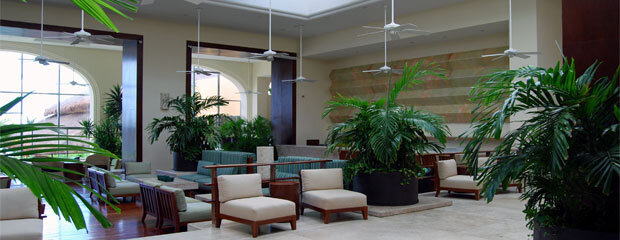Today’s savvy nomad has realized that the hotel experience is an integral aspect of travel. Hotels are no longer merely the place of a morning departure and evening return, the place to shower and sleep, the place just to hang one’s hat; many guests expect their hotel to be an experience and an extension of its locale. Services and amenities continue to be important, and a beautiful space is essential, but travelers are increasingly choosing and returning to hotels based on ambiance. In other words, how your space feels is as important as what your hotel offers. Many recommend that a hotel create a home away from home, and that’s certainly important in the sense of comfort. A hotel should aim to be as comfortable as a home, but shouldn’t it offer more ease? In a sense, a hotel’s space should aspire to feel like the ideal home.
Rethink Ambiance
Travelers have eclectic tastes and strong expectations; still, it’s possible to enthuse them with unexpected features. The details of these features will depend on the brand you want to portray and story you want to tell – and make no mistake; ambiance tells a story. Decor continues to trend towards minimalism; however, simplicity can be executed in many ways. Some are choosing to mix neutral colors with soft blues, greens, and yellows. Others showcase one bold color – like a deep blue, red, or purple – set against softer creams and whites. Still others include urban art (like graffiti) as a striking visual statement. Mix and match tones, textures, and styles to produce unpredictable and engaging results.
One of the unique aspects your hotel has at its disposal is… itself. What is the history of the hotel? The building? If newly built, what is the inspiration behind its design? What is the history of the community? Every hotel has a story. Tell it through the traditional mediums of photographs, art, and displays, but also in the furniture you choose and the overall mood you set. Including pieces from local artists and artisans is a great way to tell your and your community’s story, and can also give your guests a unique glimpse at local ways of seeing the broader world.
This year many hoteliers will also rethink the function of their spaces.
Lobbies >> Front desks are increasingly being replaced with sit-down concierge desks where guests sip on coffee or wine while the check-in is conducted by staff with iPads. The lobby is your guest’s first interaction with a hotel’s physical space. It should be inviting, not pragmatic. Many hotels already have cafes, restaurants, or bars connected to their lobbies. Others are thinking beyond those mainstays, incorporating specialized bookstores, galleries, and libraries into their lobbies, opening a space for community members and guests to interact.
Rooms >> How often do guests use all the drawers in hotel rooms? Or hang a full closet of clothes? If your hotel caters to short stay visitors (and most do), the trend in room design is moving towards simplification with furniture designed especially for hotel rooms, including wall racks for hanging clothes, bed frames that enable a guest to slide their luggage underneath, and nightstands that double for desks. This trend is particularly appealing to hoteliers in urban markets where square footage is limited. Simplified furniture lends a spacious feel without needing as much space. Also, by designing variations in layout and differences in decor (through wall treatments, rugs, and lighting), hotels are increasingly providing a more distinct, fresh, and memorable experience, one that guests will be inspired to relive.
Incorporate Nature
Including natural elements in hotel design is not new in 2018, but it has recently gained a new name, and with that comes a whole philosophy for rebuilding a relationship between humans and their environment. Biophilic Design will be on many designers minds this year. Biophilic Design seeks to remedy the discord between our lifestyle (especially urban) and our innate desire to connect with nature. Designers with this mindset aim to integrate buildings into their surroundings, incorporate natural elements like large plants, wood and stone, and maximize natural light. In a hotel’s communal spaces, designers are incorporating vertical gardens and multi-level terraces. At resorts, room sizes are decreasing to make room for larger balconies and verandas. In urban and rural hotels alike, expansive windows enable the local foliage and panoramic views to become part of a room’s ambiance.
The Human Spaces report into the Global Impact of Biophilic Design in the Workplace suggests that having a view of nature can trigger a dopamine response, and that contact with nature “has a restorative effect,” reducing stress and contributing to overall well-being. Designing spaces that incorporate elements from nature encourages an emotional connection with our environment, which will not only provide a sense of experience in your guests but also contribute to the productivity of your staff.
Embrace Technology
We crave more interaction with nature and people, but we’re also not willing to relinquish our electronic devices. Hotels should design bedrooms, boardrooms, and communal spaces that allow guests to stay connected.
Designers are creating clever ways to hide charging stations and preserve the décor of a room. Seamless doors in desks or nightstands open or lift to reveal USB ports and electrical outlets, enabling the modern guest to quickly plug in for work or play. Other designers are creating innovative ways to incorporate ports and outlets into the design of their headboards and other pieces. Hotels are also providing ports to enable guests to connect to their own media (Netflix, Apple TV, Google Play and YouTube) to watch their own content on the bigger screen. This is especially attractive for families who desire immediate access to cartoons and other programming for their young children, but many of us live in a world where we’re used to having our media at the tips of our thumbs. Offering access to our own media is one more way to offer the comforts of home, and offering access through innovative designs has the potential to elevate those home comforts.
Hotels are continuing to adopt smart technology like solar panels and personalized tablets to control room temperature and room service, but hotels are also ushering us into the future by embracing dynamic design features like wallpaper that changes color or pattern based on light and temperature. The hotels that deliver the most memorable experiences in 2018 will fuse innovation, design, and storytelling with comfort, leaving guests to return home to tell not only of their adventuring in your community, but of the experience they enjoyed throughout your hotel.

























